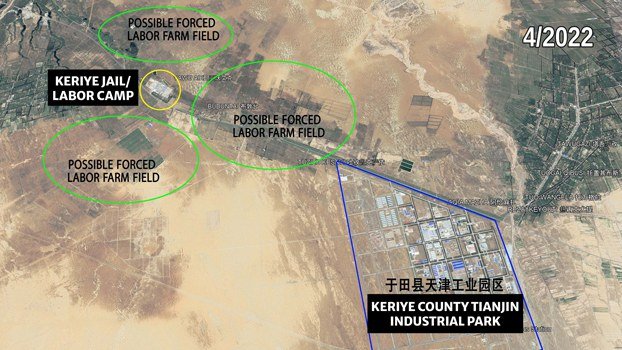Junta offensive in Myanmar’s Kachin state kills 10, razes 1,000 homes
The military offensive began in Shwegu township on March 23 and continued for 19 days, during which the junta carried out more than a dozen airstrikes and engaged local resistance forces in at least 10 major battles.Over the period, junta troops from the military’s 88th Division had killed at least 10 civilians and razed some 1,000 houses to the ground, residents said.
The offensive, which ended on April 10, is the latest push by the military to gain control of northern Myanmar’s Kachin state, where the junta has been battling local units of the People’s Defense Force paramilitary group and the formidable Kachin Independence Army since its Feb. 1, 2021 coup d’etat.
A member of the Shwegu PDF told RFA Burmese that at one point, the fighting was so intense that the junta “launched three airstrikes a day for six days.”
“They fired into the villages with heavy artillery that burned down the villages. The remaining houses were torched and destroyed by the junta troops,” said the PDF member, who spoke on condition of anonymity citing security concerns.
“A total of 12 villages were damaged. Some civilians were killed, too. When we tried to clear the ruins after they left, we found the bodies of civilians left unburned.”
Following the offensive, the junta convoy proceeded towards the main road between Shwegu and neighboring Bhamo township, the PDF member said, although he could not provide further details on its location.
A statement issued by the junta on April 9 seemed to confirm the reports, saying that “21 battles took place in Shwegu between March 23 and April 8.”
‘Those who didn’t die were shot’
A resident of Shwegu’s Si Thar village told RFA that 10 civilians from the area were killed by junta troops when their convoy suddenly appeared in the area.
“Some of them were herding the cattle in the fields, others were trying to hide when the advancing junta convoy found them,” likely on April 8, said the resident, who also declined to be named.
“They were captured and killed by the junta troops. They left some of them burning with their hands tied together behind their backs. Those who didn’t die after being set on fire were shot dead.”
The resident said members of the convoy set fire to the villages of Si Thaung, Si Maw and Nat Lan before leaving.
“The people they killed were only innocent civilians from Si Thar village,” she added, and ranged in age from 22 to more than 60 years old.
Residents buried the bodies, which were discovered with gunshot wounds and cut throats, on April 14, after the convoy departed, she said.
In its press release on April 9, the junta said that members of the military were injured during the offensive and that it had recovered the bodies of 17 KIA and PDF fighters during the fighting. It claimed that the KIA and PDF had been providing weapons and ammunition to resistance forces and smuggling timber after gaining a foothold in the area.
An information officer with the Shwegu PDF told RFA that 50 junta soldiers were killed during the offensive, while the KIA and PDF lost three fighters each. RFA was not able to independently verify the information officer’s claims.
‘We are still too scared’
Meanwhile, thousands of residents of Shwegu’s 12 villages have been sheltering in the jungle since the fighting began, according to area sources.
A resident of one of the villages, Man Hkar, said they dare not return out of fear that the junta troops would return.
“We are still hiding in the jungles, while some are staying in small huts on their farms,” the resident said. “People told us that we can go back because the fighting has cooled off, but we dare not. We are still too scared.”
Residents who have been surveying the damage said that during the 19-day offensive, junta troops burned down nearly 1,000 civilian homes in Shwegu’s 12 villages.
Some of the homes were destroyed by bombs dropped by junta jet fighters, although most were razed by arson, they said.
The junta has previously denied that its troops set fire to civilian homes.
A resident of Si Thar who was among those whose homes were burned said that rebuilding what the junta had destroyed would be difficult, noting that the local population is still dealing with the trauma of the fighting and loss.
“Some of us have fled to the town and some to the jungles, but we all are facing food shortages and sheltering difficulties,” the resident said.
“We can stay in other people’s houses for now, but we don’t have the money to buy new ones for ourselves ... About 100 houses were burned in our village alone. I have become homeless.”
According to Thailand’s Assistance Association for Political Prisoners (Burma), authorities in Myanmar have killed at least 3,427 civilians and arrested nearly 21,500 since the February 2021 coup, mostly during peaceful anti-junta demonstrations.
Independent research group Data for Myanmar said that junta troops had burned more than 60,000 civilian homes across the country as of the end of February.
Translated by Myo Min Aung. Edited by Joshua Lipes and Malcolm Foster.
[圖擷取自網路,如有疑問請私訊]
|
本篇 |
不想錯過? 請追蹤FB專頁! |
| 喜歡這篇嗎?快分享吧! |
相關文章
AsianNewsCast























